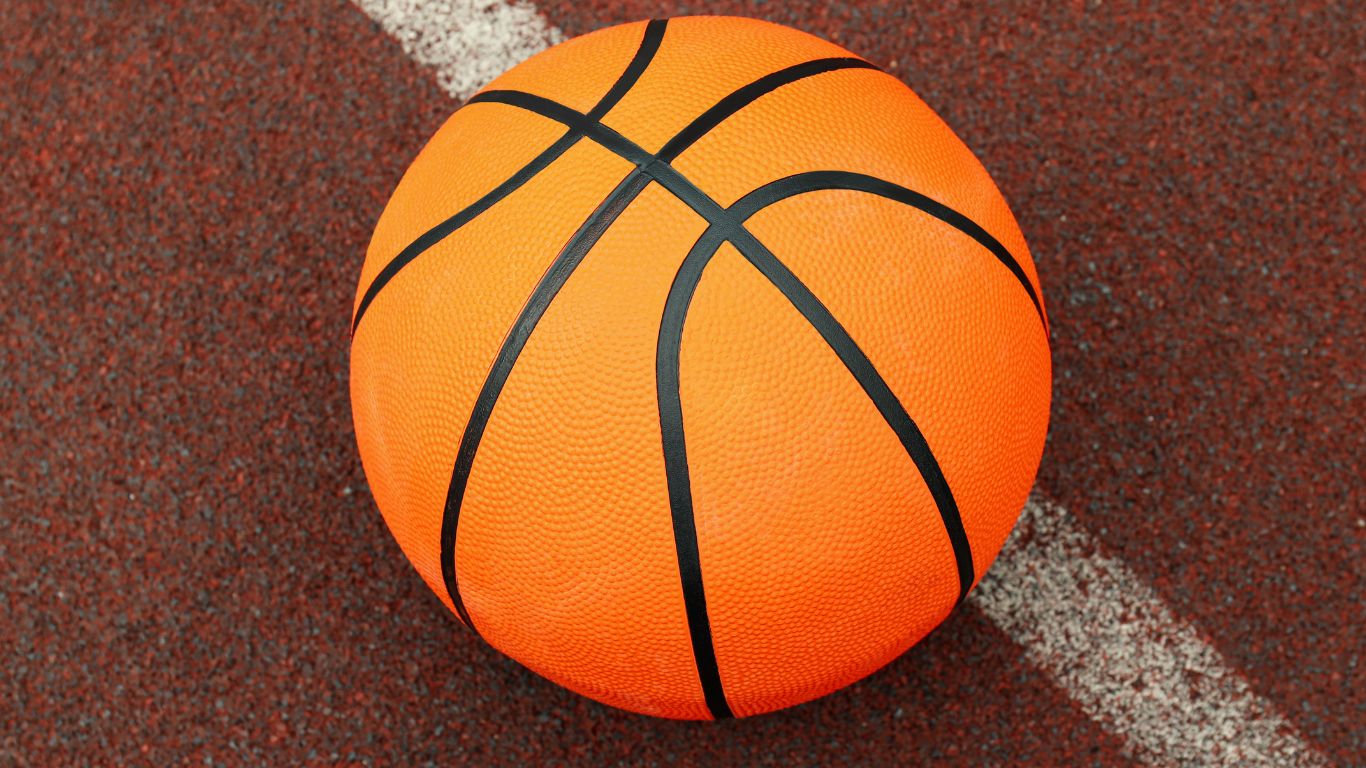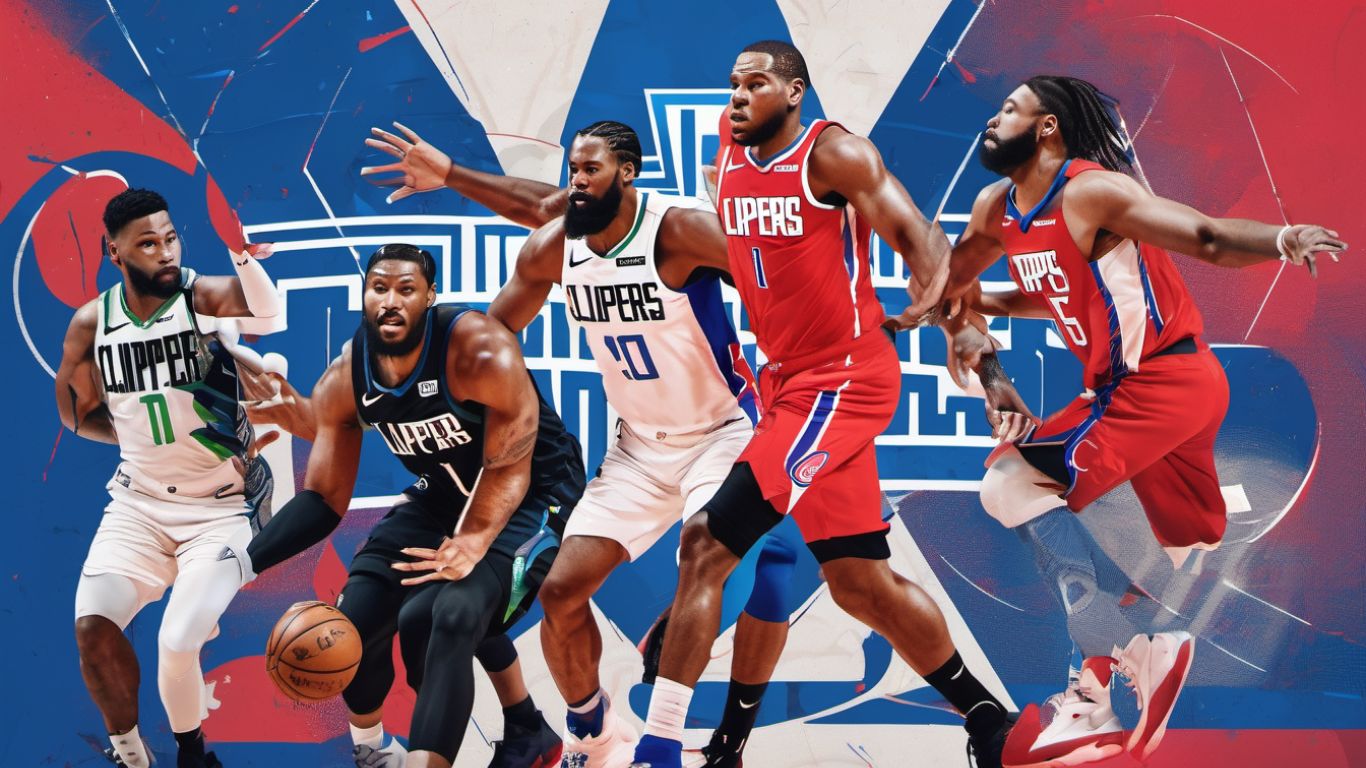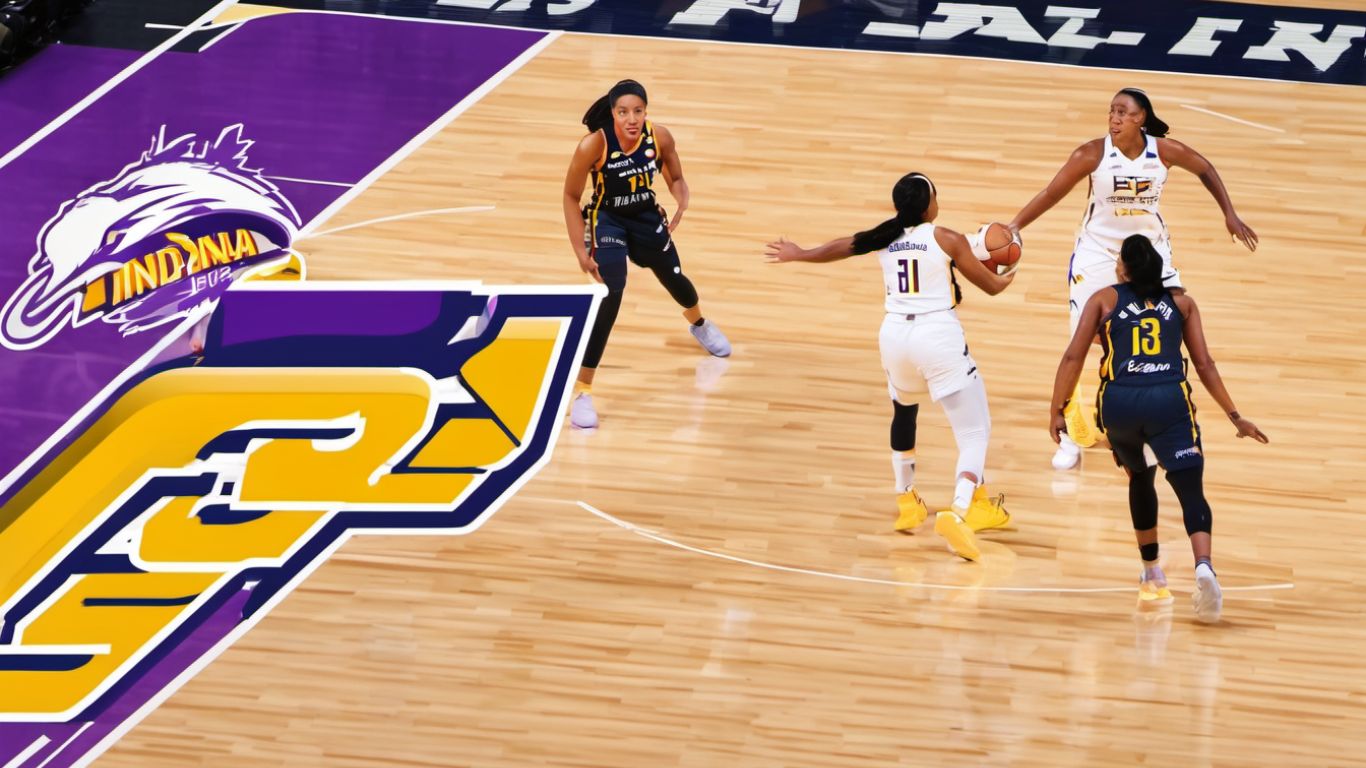Have you ever wondered why a basketball is always the same color? When you think of a basketball, the first image that comes to mind is most likely the iconic orange hue. But why orange? Is there a scientific reason behind this color choice, or is it simply a matter of tradition? In this article, we will delve into the intriguing history and science behind the color of a basketball, uncovering why this sport’s essential equipment is clad in a shade that has become synonymous with the game. So get ready to unravel the mystery of the basketball’s color and discover the fascinating story behind its enduring shade of orange.

Credit google.com
The History of the Basketball Color
When you picture a basketball, what color comes to your eyes? Most likely, your mental image involves a vibrant orange sphere, seemingly synonymous with the sport itself. But have you ever wondered why basketballs are predominantly orange? The color choice for this beloved sports equipment may seem arbitrary, but it has a fascinating history dating back several decades.
The origins of the basketball color can be traced back to the early 20th century. In the early years of basketball, the sport was rapidly growing in popularity, and its inventors, Dr. James Naismith, and his colleagues were in search of an easily visible ball that could be used on indoor courts. At the time, it was common for basketballs to be made of either leather or rubber. While leather basketballs were readily available, they tended to darken over time and became less visible to players as the matches progressed. That’s when a light-bulb moment struck – it was time to experiment with colors.
In the early 1950s, the first official basketball color change was introduced. The iconic orange hue was adopted by the Basketball Association of America (BAA), which later merged with the National Basketball League (NBL) to form the National Basketball Association (NBA). Practicality rather than aesthetics drove this decision to switch the solid color from brown to orange. The new hue provided better visibility on television, giving spectators and viewers a clearer view of the game.
Interestingly, the choice of orange was not random either. The color orange was chosen due to its high contrast against the blue or silver gymnasium walls, ensuring players and fans could easily spot the ball during fast-paced gameplay. The boldness of the orange also gave the basketball a distinct identity, making it instantly recognizable amidst the flurry of movement on the court.
Over time, a standardized shade of orange, primarily referred to as “international orange,” was established for basketballs. This standardized color allowed for consistency across different manufacturers and ensured that all basketballs used in professional and amateur games had the same vibrant appearance. Adopting standardized colors also made it easier for officials to make accurate calls regarding out-of-bounds plays and fouls, as they could quickly identify the ball’s contact with players or the court.
The basketball’s color has remained unchanged since its introduction in the 1950s. Despite occasional variations like promotional balls for special events that may feature different designs or colors, the classic orange hue has stood the test of time. It has become so deeply ingrained in the sport’s culture that merely seeing an orange basketball can evoke anticipation and excitement for basketball enthusiasts worldwide.
While the history of the basketball color may seem inconsequential compared to the monumental moments and players that have defined the sport, it is a vital part of its evolution. The orange basketball has become an integral game symbol from its practical origins to its distinct identity. So, the next time you spot a basketball whirling through the air, take a moment to appreciate the history behind its vibrant hue – a color that has connected generations of players and fans alike.

Credit amazon.com
The Scientific Explanation Behind the Color
When we think of a basketball, most of us envision a particular color: orange. But have you ever paused to wonder why a basketball is this vibrant hue? What scientific explanation lies behind the color?
To understand the color of a basketball, we need to dive into the world of science and examine the concepts of light and color. Every object around us appears to have a specific color because of how it interacts with light. The color we perceive results from light waves hitting an object, being absorbed or reflected, and reaching our eyes.
In basketballs, the color orange is produced through a combination of light absorption and reflection. The basketball’s surface is made up of unique materials that possess specific properties. These materials interact with light, leading to the ball appearing orange.
While it may seem strange that an object can have a specific color, it is all due to the complex dance between light and matter. When light strikes the surface of the basketball, it encounters tiny particles called atoms or molecules. These particles interact with light by absorbing specific wavelengths and reflecting others.
In the case of an orange basketball, the materials on the ball’s surface contain atoms or molecules that can selectively absorb light. When white light, a combination of all the colors in the visible spectrum, illuminates the basketball, the atoms or molecules in the surface material absorb specific wavelengths from this light.
In other words, specific colors are absorbed by the surface material, while others are reflected to our eyes. This is where the interpretation of color comes into play. When orange-colored light waves strike the basketball, they are absorbed, while other colors, such as yellow, red, and green, are reflected. These reflected light waves are what our eyes perceive, resulting in the basketball appearing orange to us.
Light absorption and reflection are not exclusive to the basketball’s surface alone. The rubber or synthetic material of the basketball also contributes to its vibrant color. These materials are formulated to possess pigments or dyes that enhance the color response. These added substances interact with the light waves similarly, creating a more intense and vivid orange color.
Moreover, it is essential to note that the color of a basketball can vary slightly depending on the brand or manufacturer. This is due to the specific materials and pigments used during production. Some basketballs may appear slightly darker or lighter in shade, but the underlying science remains the same.
The Symbolism and Cultural Significance of the Color
The symbolic significance and cultural value of the color of a basketball may take time to be apparent to all. After all, a basketball is just a sports equipment used for a game. Well, not quite. With its distinct ebony hue, the color of a basketball holds more profound meaning and cultural significance that transcends its practical purpose.
The color of a basketball, traditionally black, is a symbolic representation of various aspects of the game of basketball itself. To begin with, the black color represents strength, power, and authority. When players set foot on the court with a black basketball, it means their determination, grit, and dominance.
Symbolically, the black color also embodies the essence of unity and inclusivity. Basketball is a sport that brings people from diverse backgrounds together, regardless of race, ethnicity, or social class. The black color of the basketball represents the unifying power of the sport, reminding players and spectators alike that on the court, everyone is equal, and the skills, passion, and teamwork truly matter.
Furthermore, the black color of the basketball carries historical and cultural significance. Throughout history, sports have often been a platform for social change and activism. Basketball, in particular, has played a significant role in empowering black athletes and challenging societal injustices.
The black color of the basketball serves as a reminder of the strides made by black athletes in breaking barriers and achieving success in the face of adversity. Black athletes have left an indelible mark on basketball, from pioneers like Bill Russell and Kareem Abdul-Jabbar to modern-day legends like LeBron James and Maya Moore. The black basketball acknowledges and celebrates its contributions, inspiring future generations to dream big and overcome obstacles.
Beyond its symbolism within the realm of basketball itself, the color of the basketball holds cultural significance in various communities worldwide. In many African cultures, black is associated with spirituality, protection, and regeneration. Carrying this cultural association, the black basketball can be seen as a sacred object, embodying the essence of the sport and its role in fostering community, growth, and resilience.
In addition, black basketball has become an iconic part of streetball and urban culture. Basketball courts in inner-city neighborhoods often feature vibrant artwork and graffiti, with the black basketball symbolizing the game’s raw energy and authenticity. Streetball legends like Earl “The Goat” Manigault and Rafer “Skip to My Lou” Alston are just a few examples of players who achieved legendary status playing with a black basketball on the blacktops that symbolize the roots and soul of the game.
The Evolution of Basketball Colors over Time
Basketball has come a long way since its humble beginnings in the late 19th century. From the rudimentary peach baskets nailed to the gymnasium walls to the highly advanced arenas of today, basketball has evolved in countless ways. One aspect of this evolution that many may overlook is the color of the basketball itself. Yes, you read that right – the color of a basketball.
In the game’s early years, there was no set standard for the color of a basketball. Many games were played with whatever ball could be found, often a soccer ball or a worn-out leather ball. These early basketballs had various colors, ranging from brown to dark orange or black. The lack of standardized colors made it difficult for players to track the ball’s movement during a fast-paced game.
As the sport grew in popularity and rules began to be standardized, the need for a more consistent and easily visible color for basketballs became evident. In the 1950s, the Basketball Association of America (BAA), which would later become the National Basketball Association (NBA), established the first set of regulations for the color of basketballs. At that time, the recommended color was a deep, rich brown.
However, it wasn’t until 1983 that the color of basketballs changed significantly. Spalding, one of the leading basketball manufacturers, introduced a new color for their basketballs: a vibrant, eye-catching orange. The decision to change the color was based on research that showed orange as the most visible color under various lighting conditions, making it easier for players and spectators to track the ball’s movement.
This color change had a profound impact on the game. It not only made the ball more visible for players on the court, but it also enhanced the viewing experience for fans. The bright orange color stood out against the court and made it easier for spectators watching the game in person and on television to follow the action.
In recent years, there has been a slight shift in the hue of basketballs. Manufacturers have experimented with different shades of orange to find the optimal color that offers maximum visibility while ensuring the ball’s durability. The current standard color for basketballs is a slightly lighter shade of orange compared to the early 1980s.

Credit amazon.com
However, basketballs’ colors may continue to evolve in the future. With advancements in technology and materials, there is always room for improvement. Manufacturers may continue exploring new color options that enhance visibility or provide other benefits to the players and the game.
The Impact of Color Perception on the Game of Basketball
In the thrilling and fast-paced basketball game, color perception plays a significant role in player performance and overall game experience. Although it may seem surprising, the colors used on the basketball court, jerseys, and even the basketball itself can genuinely impact the players’ ability to perform and the audience’s enjoyment of the game.
Color has long been known to evoke certain emotions and stimulate our brains differently. In basketball, the colors used on the court and surroundings can influence players’ focus, concentration, and depth perception. For instance, a basketball court with vibrant and contrasting colors helps players easily distinguish their teammates, opponents, and the different lines on the court. This facilitates smooth passes and coordinated plays, improving teamwork and potentially higher-scoring games.
Similarly, the colors of the jerseys worn by the players can affect performance and strategy. Research has shown that teams wearing darker colors, such as black or dark blue, may be perceived as more aggressive and dominant by their opponents. This perception can subconsciously affect the players on the receiving end, potentially causing them to act more cautiously or become unnerved. On the other hand, teams wearing lighter colors, such as white or light blue, might be perceived as more approachable and less intimidating. This psychological impact can influence how players interact and compete on the court.
Interestingly, the color of the basketball itself is yet another factor that can influence the game. Traditional basketballs are often orange, which provides a strong contrast against the court’s color and allows players to track their movement better. The bright orange hue provides for better visibility, especially during high-speed plays, and assists in judging the distance and trajectory of the ball. While white basketballs have also been used in specific contexts, the choice of color must consider the overall visibility and contrast against the court surface.
Moreover, color theory suggests specific colors can affect a person’s mood and energy level. This principle can be applied to the basketball court, as the choice of colors in the arena can impact the players and the audience alike. For instance, warm colors like red and orange are believed to increase enthusiasm and energy levels, creating a more intense and exciting game atmosphere. On the other hand, more excellent colors like blue and green are associated with calmness and relaxation. Combining warm and cool colors in the court design can help balance intensity and serenity, promoting an engaging game experience.
Frequently Asked Questions
1. What is the color of a basketball?
The color of a basketball is primarily orange. It is a bright, vibrant hue seen clearly on the court. However, there are variations in shade and tone, and some basketballs may appear slightly darker or lighter than others. These differences can be attributed to factors such as the manufacturing process, materials used, and even the ball’s wear and tear.
2. Why are most basketballs orange?
The choice of orange as the predominant color for basketballs is not arbitrary. It has been standardized to enhance visibility during gameplay. The bright orange contrasts nicely with the dark color of the court, making it easier for players, officials, and spectators to track the ball’s movement. It also helps identify the ball’s rotation and trajectory, ensuring fair and accurate gameplay.
3. Are there any regulations regarding the color of basketballs?
Yes, there are regulations set by various governing bodies, such as FIBA (International Basketball Federation) and NBA (National Basketball Association), regarding the color of basketballs. According to the regulations, basketballs used in official games must have a primary orange color. These guidelines ensure consistency across different platforms and make it easier for players to adapt when switching between different leagues and tournaments.
4. Are there any basketballs available in different colors?
While orange is the most commonly used color for basketballs, variations are available in different colors. Some manufacturers produce basketballs in different colors for recreational purposes or promotional events. These basketballs may come in red, blue, green, or even multi-colored designs. However, it’s important to note that these non-standard colors are generally not used in professional or official games.
5. How is the color of a basketball achieved?
The orange color of a basketball is achieved through a process called dyeing or pigmentation. The outer covering of the basketball, typically made of synthetic leather or rubber, is treated with color pigments during the manufacturing process. This ensures that the color permeates the material and remains intact even with regular use. The shade and intensity of orange can vary between different manufacturers or models.
6. Does the color of a basketball affect gameplay?
The color of a basketball does not directly affect gameplay. The primary purpose of the bright orange color is to enhance visibility and facilitate fair gameplay. However, some players may have personal preferences for the ball’s color. Some may find the orange color more visually appealing or have a psychological association with it, which can impact their performance to an extent.
Conclusion
Color perception has a substantial impact on the game of basketball. The colors used on the court, jerseys, and basketball can influence players’ performance, teamwork, and strategies. Additionally, colors can affect the emotional energy of both players and spectators, enhancing the overall game experience. Understanding and utilizing the psychology of color in basketball can lead to a more engaging and dynamic game, captivating players and audiences. The color of a basketball may seem simple, but as we’ve explored, it holds more mystery than meets the eye. We’ve discovered that the familiar orange hue was not a random choice but a deliberate effort to enhance visibility and performance on the court. We learned about the role of science and psychology in selecting the specific shade of orange for the basketball. From the emphasis on contrast to the impact on players’ visual perceptions, the color of a basketball plays a crucial role in the game. So the next time you grab a basketball and hit the court, take a moment to appreciate the thought and consideration of selecting that vibrant orange color and how it continues to shape the game we all love.









